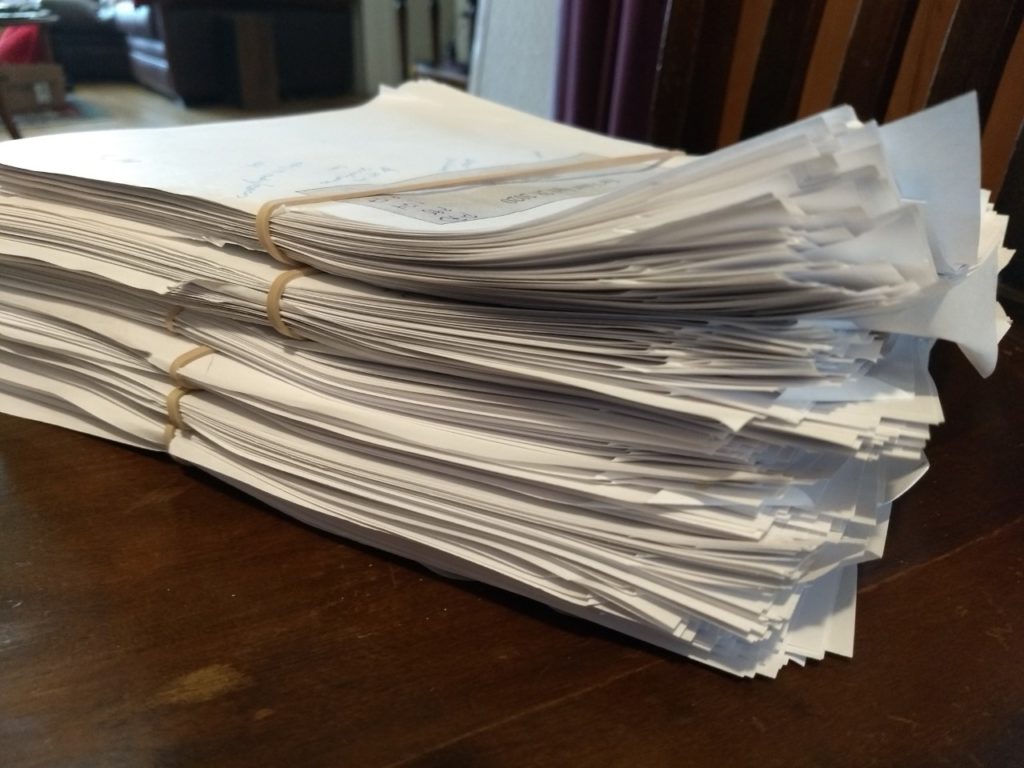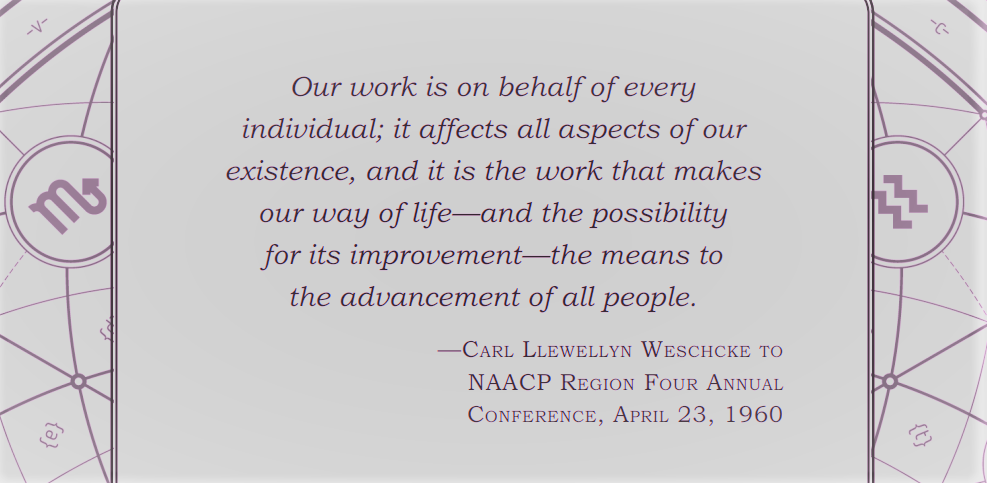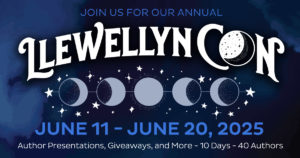Elevating Diverse Voices in Paganism

Photo by Kat Stokes on Unsplash
Recently a blog post called out Llewellyn and other publishers (but mostly Llewellyn because we’re the largest and oldest metaphysical book publisher) for our collective contribution to white supremacy. I cannot speak for all the employees of Llewellyn; the following are my own personal remarks that will hopefully shed light on the processes and work flow that I and the other five acquisitions editors at Llewellyn follow.*
I am only a racist being to the extent that I was raised in and continue to live in a society that marks “White” as the default and others everyone else, a society that values White (and male and cishet) lives over others; this toxic belief system is ingrained in our thoughts and institutions, no matter how woke we may individually strive to be. But I do not condone or agree with any aspect of the white supremacist movement or its tenets. To the contrary, I strive to be anti-racist in my words and actions and to dismantle harmful systems. I know I will continue to make mistakes, because we all do, but more importantly I will continue to learn and grow.
There were many things I didn’t understand about the Pagan community when I first stepped into my role at Llewellyn in 2005. I moved here from an eight-year stint in Hungary at that time and was not connected with the American Pagan community at first. I had a lot to learn and the first few years were more focused on figuring out what would sell and what wouldn’t; what projects I would bring to our weekly Acquisitions Meeting that would be accepted versus what would be rejected; learning the ins and outs of the publishing industry and becoming better at my job. Almost every year I have attended at least 2 Pagan events, mostly indoor conventions such as PantheaCon, Between the Worlds, ConVocation, Esoteric Book Conference, and of course Paganicon here in the Twin Cities. At those events I have been taught by the community to understand the nuances, differences between groups, variations in practices and beliefs, and so on.
I’ve also taken those opportunities seriously to learn more about racism and bias in the Pagan community. I’ve attended panels made up of BIPOC [Black, Indigenous, and People of Color] voices who question the community’s inclusivity and call out the microaggressions as well as the blatant racism they’ve encountered in our supposedly safe spaces. I remember one particular message that came across loud and clear at a 2014 PantheaCon panel called “Pagans & Privilege,” featuring T. Thorn Coyle, Crystal Blanton, Charlie Glickman PhD, Elena Rose Vera, and Xochiquetzal Duti Odinsdottir (the panel was recorded, I highly encourage you to take a listen – click here for a direct link to the audio). The message was this: look around at your events. Are there BIPOC there? Are there differently-abled people there? Are there transgender people, young people, veterans there? If not, why not? It’s not that they don’t exist in our community at all; it’s that they don’t feel safe or welcome. Institutions are built up over time that systemically keep people out. Investigate why they are not there. You have to do more than just create and advertise an event – you need to actively work to make it more diverse, you have to actively work to make it safe and accessible for them to attend, and you need clear policies that will make those changes occur. I took that to heart when I served on the board of Paganicon (2010-2017) and to this day I am proud of the work they are doing to make the conference less homogeneous in every way.
Look around at your events. Are there BIPOC there? Are there differently-abled people there? Are there transgender people, young people, veterans there? If not, why not? It’s not that they don’t exist in our community at all; it’s that they don’t feel safe or welcome.
I also took it to heart in terms of acquisitions, wrote about it in my trip report to the whole company, and began actively, purposefully seeking out more diverse voices than I had before, even though I was already several years into my career at Llewellyn at that point – better late than never, I always say. Have I been successful? Apparently not enough, according to all indicators. I can and will do better. Let me explain a bit about my job.
The normal process for acquisitions is the following: someone submits a manuscript or proposal to me. (This may be a blind submission, or from an agent, or a friend of one of my authors, or someone I’ve met with at a conference and actively courted.)
If I’ve assessed that this book might be of interest to Llewellyn, I put together a packet for our Acquisitions Committee, which is made up of the president, the publisher, the sales staff, and some marketing and publicity staff, at Llewellyn. We discuss the proposal in detail, and then a few days later the sales department gives me a sales estimate. The sales estimate determines whether I can contract the book or not. Sometimes books I really love don’t make the cut and there’s nothing I can do about it.
This part of the process only takes a few days, but I have so much other work that it often takes two to three months before I even get to open a proposal email. I honestly have ten in my inbox right now that are waiting for me. So what’s taking up all my time if it’s not acquisitions? I’m an acquisitions editor, right?
The main part of my job is actually developmental editing. That means that for each book of mine that is contracted, I read the entire manuscript carefully. I am looking for things like organization, the flow of ideas, citations, plagiarism, insulting or offensive language, cultural appropriation, accuracy of information, whether illustrations are needed, whether permissions are required for quotes, whether chapters are consistent in length, style, and formatting, whether we need additional materials like index, reading list, glossary, etc.

Some of the dog-eared manuscripts I’ve worked on in the last couple months.
This is not a quick read. I sometimes send authors as many as 20 pages of written notes, usually at least around 10. I am often on a schedule of reading one manuscript per week, which gives me a few days to read it, a day to have a meeting with the production editor, production manager, layout designer, and art director to discuss it and compile their feedback into my notes, and to send said notes to the author while answering any other questions of theirs that may arise. Our end goal is ultimately to produce a readable and factually accurate book that we can all be proud of.
It takes a full year to take a book from first draft to published, and I am usually working on three catalogs in different phases at the same time.
Meanwhile, in whatever time is left over, I’m also preparing for Launch meetings (where we decide on the cover direction, title and subtitle of each book, with the author’s input), conveying those decisions to my authors, proofreading every bit of copy associated with each of my books (catalog copy, back cover copy, author bio), re-reading revised manuscripts that authors have sent back in response to my notes, sending covers to authors for their approval and negotiating the fall-out if there are certain elements that need to be changed, planning Llewellyn’s involvement in conferences, presenting at sales conferences and Pagan conferences, and so on. It takes a full year to take a book from first draft to published, and I am usually working on three catalogs in different phases at the same time. As Judika Illes (my counterpart at Weiser) has said, our job is triage. Sometimes it feels like the last thing I have time for is Acquisitions.
This is why honestly, it’s hard for me to reach out beyond my comfort zone. I am expected to do 8-10 books per season, three seasons per year. My boss has asked me at every single annual review for years “how can we help you acquire more books?” and there is no good answer short of “hire me an assistant” (which will never happen. I work in a cubicle – well, now I work in my dining room, but my office space is a cubicle). It’s a business, and my widget is bringing in books, there is constant pressure to do so. It’s often easier for me to choose among submissions that come to me – the great majority are from current authors, whose subsequent submissions we are contractually obligated to consider – than to find a free week in my schedule in which I can scour the internet for new and interesting voices. This is something that both my boss and I want to work on in terms of changes to our normal operations, which we are still exploring.
Coming back to Pagan festivals and conferences, these are great places for me to meet folks face to face, show them who I am, and invite them to submit proposals to me. For many years I have been actively trying to attend workshops and lectures presented by BIPOC in order to address the relative lack of diversity in our publishing roster. And some books have come of those efforts. But simply my approaching someone and telling them they should write a book or contact me about the publishing process is not going to magically make a book get written, and I still find myself struggling for more representation in our list.
The reasons? The same reasons publishers in other genres find it difficult. Writing books does not pay the bills for anyone except a very lucky minority, particularly in our field. The vast majority of my authors have day jobs to support themselves. It can be hard for anyone to find uninterrupted time away from family and work obligations to focus on researching and writing a book, and there are even more barriers for BIPOC because of the inherent structural inequalities in our society at large. And in our Pagan community, one of those barriers to even accessing one of the doorways – meeting me or other publishers at a conference — is the ability to take time off work, travel and afford to pay for conference fees, room, and board. Another barrier is being invited to speak on panels at the conferences, or scheduled for presentations by the organizers. Since not all my authors or proposals come to me via in-person conferences, another barrier may simply be not knowing how a book is submitted and not knowing anyone personally who can give them advice or make an introduction. I’m sure you can think of many more barriers, but I’d be particularly interested in hearing from BIPOC themselves.
What are the barriers that we can take down on our end?
To that end, I’m going to disclose something that is in the works. At many conferences we offer education in the form of publishing panels (learning what it takes to submit a proposal, how the book publishing process works, etc.) and also take “quick pitches” of 5 minutes each – a mini meeting to see if we think your idea is good and you should propose it to us. Since Mystic South will not be happening in person this year due to covid-19, my fellow Llewellyn acquisitions editor Heather Greene had asked me whether I’d like to take quick pitches virtually with her one day as a stand-in. We’ve since further developed that idea and plan to present an online publishing workshop specifically for BIPOC to really enhance this conversation. We have been both trying to acquire more diverse voices – what can we do to help? What are the barriers that we can take down on our end? This workshop is still in the works because A) it takes time to put together something meaningful and worthwhile, B) it takes even longer within the structure of corporate culture, C) Heather and I are both very busy editors and we just finished our Spring/Summer 2021 catalogs and are in the midst of Launch meetings and cover reviews. Obviously we’ll be announcing more details when we have a date set and a platform chosen.
I’d also like to ask everyone who’s reading this – if you know someone who you think should be published, please introduce us! Yes, I’m asking you to help me do my job because the pandemic has made this even more challenging. We can all help make our community more inclusive. If someone has promise, I want to meet them, I truly do.
As the late Minnesota senator Paul Wellstone said, “We all do better, when we all do better.” Thanks for listening.

From the book Carl Llewellyn Weschcke: Pioneer & Publisher of Body, Mind & Spirit by Melanie Marquis, (c) 2018 Llewellyn Publications, p. 48.
* Please note that not all products on this website are published by Llewellyn; Llewellyn is the North American distributor for five other publishers around the world. I cannot and do not purport to speak to their acquisitions processes in this post.








Elysia, I’m so glad you shared this. Many people don’t understand how the process works or what’s involved, and I love your ideas moving forward. I’ve always thought of you as an honest and strong voice supporting diversity. I already knew you were looking for BIPOC voices long before any of this was brought up and I know a very talented witch of color who creates wonderful content and expressed interest in writing a book so I reached out to her and mentioned you and Llewellyn. She told me that she’s enrolled in some classes currently and doesn’t have time on her schedule at the moment but that when she does has the time to put together a proposal she’s very interested. I don’t want to pressure her, but when she’s ready I’m very excited to send her your way.
Sorry – way before this whole thing became a ‘thing’ i was speaking up for anyone who was being judged or treated unfairly. Supporting the value that everyone should be treated as the individual they are. Now with this whole ‘lets have more diversity by labelling and categorising’ in terms of ‘whether you have enough of these people or those people’ type mentality it’s almost undoing all the loving energy and efforts that all our loving, honest ancestors did (of all backgrounds through out all time) and creating a more segmented way of thinking again. Plain and simple, i was taught to not see colour and just not to judge and assume anything about other people in general – not to see colour and count how many we have on TV or in books or in music video or or or….this whole thing unfortunately is going in the opposite direction and most people get behind things without truly knowing what the TRUTH is…fact and figures get twisted from all sides all the time …people that are being unfairly treated…not ‘black people’..not ‘white people’ not any other set of vaguely labelled individuals – should be helped. Where is everyone when so many people try telling you that there are large groups of children being abused in paedophile rings and even when it eventually comes out as ‘mainstream’ news no one bats an eye lid…before anyone says i am moving the goal post of the plight of the current ‘movement’ – these innocent children INCLUDE every race you can think of including black! Plus why is no body highlighting slavery that IS going on TODAY? Not years ago…today…also why only go back in history to a certain date (roughly 400 years or so) why not have more discussion about all the different forms of slavery that have took place – would that no be an act of being more diverse? I am grateful for everyone that truly is trying to help people that are being treated unfairly at any point in time and that is one of the most beautiful expressions of our united humanity and i am sure most people such as yourself here at Llewellyn and others have the best intentions at heart – i just don’t agree with how everything is being done at present. I feel freedom of speech and diversity of opinion is equally important as any other form, so i hope this comes across how my heart intends and that this viewpoint will also be posted. Always the best wishes for all on our souls journey x
I have a pitch that I would love to share involving hoodoo by me, a woman of color. Can I email it to you?
Yes please! You can email Submissions@llewellyn.com. Additionally, we have detailed information on our website at https://www.llewellyn.com/about/author_submissions.php that will likely be of use as you prepare your submission. Thanks, Mawiyah!